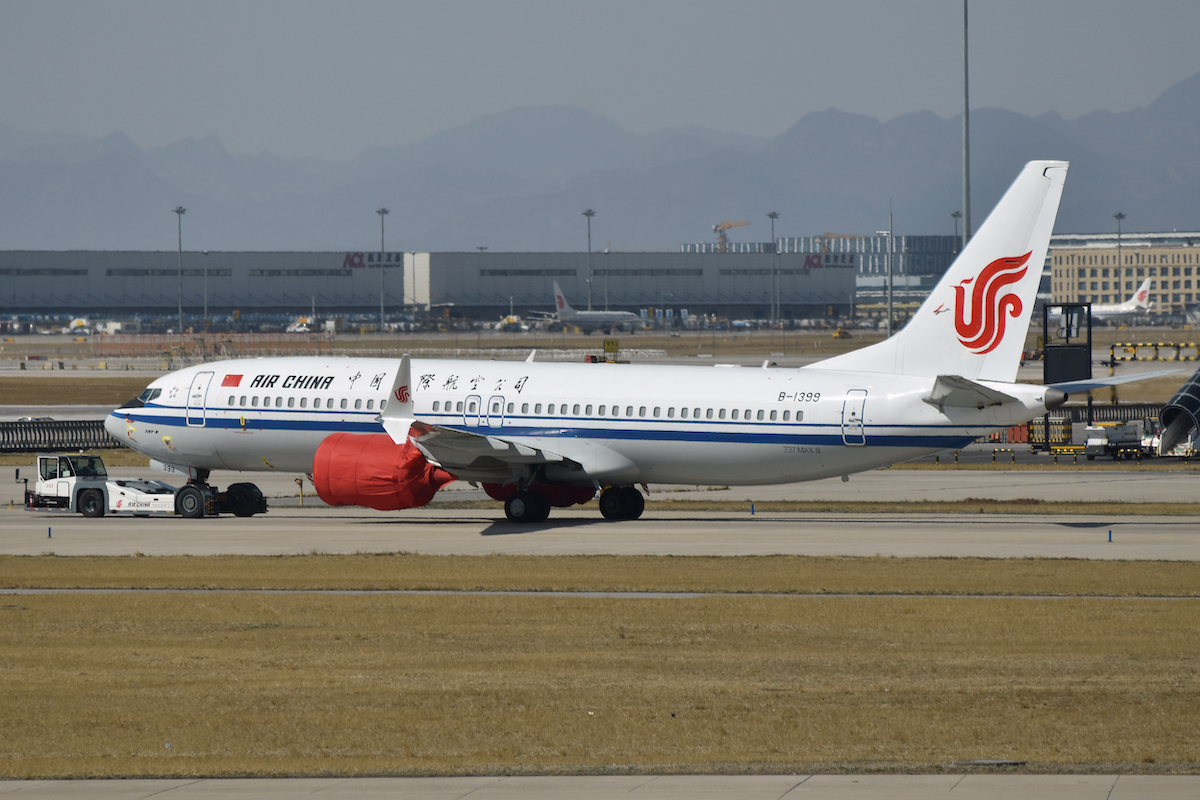China Moves Closer to Clearing Boeing 737 Max

Photo Credit: China took a step closer to re-certifying the Boeing 737 Max on Thursday. Flickr / Alan Wilson/HawkeyeUK
The Boeing 737 Max came one step closer to flying in China again, after the country's civil aviation regulator mandated fixes to the aircraft's flight control software. This could clear the way for the aircraft to resume operations in one of Boeing's largest markets in a matter of weeks, after having been grounded since March 2019.
The Civil Aviation Administration of China (CAAC) required all carriers in the country to start work on software modifications to the Max's maneuvering characteristics augmentation system, or MCAS, flight-control software, which was responsible for the Lion air and Ethiopian Airlines fatal crashes in 2018 and 2019. The two crashes resulted in the deaths of more than 350 people.
CAAC was among the first regulators to ground the aircraft in the wake of the two crashes, in March 2019. Shortly after, the world's aviation regulators acted in concert to ground the aircraft until Boeing identified the root cause and recommended fixes. The U.S. Federal Aviation Administration (FAA) re-certified the Max late last year, and most regulators followed shortly thereafter. To date, 180 out of 195 countries have re-approved the Max.
The biggest holdout was China, which had major implications for the airframer. During the type's almost two-year grounding, Boeing was unable to deliver Maxes to the world's airlines. Deliveries resumed as regulators approved the aircraft, but Boeing still has a backlog of more than 300 aircraft that have been built but could not be delivered. Of that, about one-third, or more than 100, were ordered by Chinese airlines. The country's airlines have ordered almost 200 Maxes, with 88 delivered before the grounding, and roughly 100 sitting on Boeing's lots, Boeing data show.
It's important to note that the CAAC has not lifted all restrictions on the aircraft. It could take several weeks for China's airlines to implement the recommended fixes and train pilots on the new systems. But Boeing welcomed the news. "The CAAC’s decision is an important milestone toward safely returning the 737 MAX to service in China," a Boeing spokesperson said. "Boeing continues to work with regulators and our customers to return the airplane to service worldwide."
Since the FAA re-certified the Max, airlines around the world rushed to return Boeing's best-selling jet to service, pointing to its operational economics, range, and payload improvements over previous 737 types. Passengers showed no concern about flying on the type, despite dire predictions that people would book away from an aircraft involved in two deadly crashes.
China's hesitance to re-approve the aircraft did have significant repercussions for the airframer, however. Boeing plans to ramp production of the Max up from 19 per month to about 31 per month early next year, but that production increase was contingent on China re-certifying the aircraft, Cowen & Co. analyst Cai vo Rumohr wrote. By the end of this year, Boeing was expected to delivery 280 737 Max aircraft to airlines around the world, but its plan to deliver more than 400 next year would have been impossible without China's re-certification, von Rumohr said.
Boeing CEO David Calhoun earlier this year said China would re-certify the aircraft by year's end. The company began test-flying a Max in China in August.
The Max grounding is not the end of Boeing's travails in one of its largest markets. There have been few orders for Boeing aircraft from Chinese airlines since 2017, after U.S.-China trade and political relations began to sour. Boeing reported orders for two 777Fs and three 737s from China in 2020.
China's move to re-certify the Max is one less headache for Boeing, which has struggled to keep its aircraft programs on track. The airframer has not delivered a 787 for several months, due to an FAA investigation into problems with the type's fuselage. The 777X entry-into-service has been delayed to 2023. The company reported a $132 million third-quarter loss on October 27.
Note: This story has been updated to reflect Boeing's orders from Chinese carriers since 2017.
